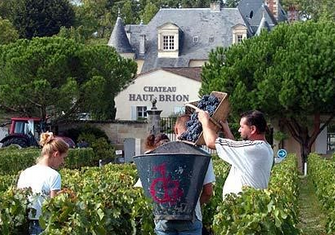The 2024 vintage yield is lower than average but quality is looking good!
Across the northern hemisphere, the vineyard teams can finally draw a breath after an intense harvest period. The wine industry is having to adapt to our changing climate and harvest with new initiatives and technologies both in the vineyard and the cellar. So what are the key observations at this stage for 2024?
- 2024 yield is lower than average across most fine wine regions
- Early quality indicatators good
- Pricing will need to reflect the market conditions on release in 2025
Last year, we reported on the dramatic drop in yield with the 2023 vintage for some regions due to climate with mildew a major factor. However, Champagne bucked the trend with an abundant 2023, with record breaking grape sizes.
We look at the 2024 harvest findings for the top sparkling wine producer and other key regions for investment wines.Bordeaux 2024 Harvest
- Across Bordeaux yield is down 14% on 2023
- Estates with well-drained soils fared better
- Expert teams with sufficient numbers to act quickly to protect vines from mildew damage protected yield and quality
- Labour-intensive, careful leaf pruning improved ripening, producing better results
- Characteristically, lower alcohol levels and higher acidity than recent vintages
Bordeaux experienced its wettest winter since 2000 combined with temperatures an average 1.5°C warmer than the previous 25-year norm early in the growing season. Premature budding led to generous flowering in April with teams working hard to defend vines against frost and mildew. A good grape load suffered slightly from a wetter and cooler period which led to uneven berry growth, particularly for Merlot.
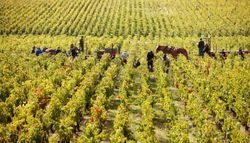 Mildew pressure through the summer period and dramatic hail in May and June impacted Northern Medoc especially. Warmer, dryer weather in late July and August boosted ripening into September and Merlot harvested started around the 19th.
Mildew pressure through the summer period and dramatic hail in May and June impacted Northern Medoc especially. Warmer, dryer weather in late July and August boosted ripening into September and Merlot harvested started around the 19th.
However, the wettest September in 30 years across the Gironde produced significant rain and cooler temperatures in the second half of the month meaning many vineyards, under significant pressure, had to pick Cabernet earlier than usual.
Quality control impacted along with the removal of vines in less prestigious estates, and Bordeaux will have less supply of 2024 than even the stricken 2023 vintage.
Burgundy 2024 Harvest
- Lower yield could drive higher prices of 2024 wines
- One of the most challenging seasons in 50 years
- 50% more rain than average
Burgundy’s cold and wet growing season triggered a constant battle with mildew in the vineyards. A very labour-intensive year, teams undertook additional intensive pruning to counter the wet conditions and provide space for air circulation to boost drying. Hail also damaged vines and hit productivity.
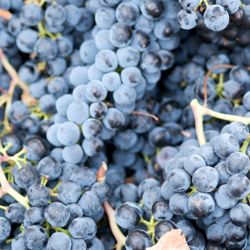 Sunnier weather in August aided ripening and the optimum acidity and natural sugar levels were achieved for good ageing in reds. Harvest was later than usual for many with larger teams in the vines and in the cellar, sorting the grapes to ensure no trace of mildew or rot in the vats.
Sunnier weather in August aided ripening and the optimum acidity and natural sugar levels were achieved for good ageing in reds. Harvest was later than usual for many with larger teams in the vines and in the cellar, sorting the grapes to ensure no trace of mildew or rot in the vats.
Grands Crus vineyards are all located on the best drained soils and suffered the least, but yield will be lower for 2024 and limited supply could drive prices for 2024.
Champagne 2024 Harvest
- Smaller than average
- Frost, hail and mildew all impacted yield
- Potentially a very good quality vintage
The 2024 vintage in Champagne was always going to be smaller than the abundant 2023 crop due to the massive Botrytis hit the vines took last year. Some growers view 2024 as a “healthier year” than 2023 in the vineyards.
Louis Roederer Cellar Master, Jean-Baptiste Lecaillon observed of the grape growth that “there were two to three bunches less per vine this year”.
Spring frosts in April and hail in May imposed challenges and Downy Mildew was the worst offender, ravaging growth. Organic vineyards seemed to cope better with managing mildew in Champagne, however sticking to strict regimes was essential.
 Chardonnay was harvested later than usual which meant the grapes benefited from the dryer conditions in early September.
Chardonnay was harvested later than usual which meant the grapes benefited from the dryer conditions in early September.
Perrier-Jouët’s Severine Frerson’s view on 2024; “the characteristic this year is fruitiness and freshness, we could have a very good vintage”.
Supply has been impacted in the region and growers will be taking advantage of the unique ‘reserve interprofessionale’ system in Champagne where wine held back from the previous vintage can be used to boost lower supply in 2024.
Piedmont 2024 Harvest
- Growers are optimistic for a very high quality vintage
- The key Nebbiolo grape promises to deliver wines of impressive structure and complexity this year
- Mildew and weather challenges well met by vineyard teams
- Yield 10% up on 2023, however 1% down on five-year average
Piedmont didn’t escape the climate challenges faced by most of the key wine growing regions for investment wines. Heavy Spring rain and high summer temperatures triggered fungal disease which was well controlled.
The local Nebbiolo grape used in the great Barolo and Barbaresco wines, is particularly sensitive to climate variations and disparity between day and night-time temperatures. Well-timed rainfall, a warm summer and skilled viticulture have combined to create a potentially excellent 2024 vintage for Piedmont reds.
Tuscany 2024 Harvest
- Higher yield, up 30% on 2023 and 4% on five-year average
- Forecast very good quality
- Challenging weather events driving innovation in viticulture
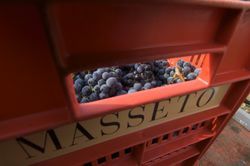 Italy overall looks to have improved yield by 7% across the country on the low-productivity 2023 vintage this year but hasn’t reached the usual five-year average.
Italy overall looks to have improved yield by 7% across the country on the low-productivity 2023 vintage this year but hasn’t reached the usual five-year average.
A mild winter and Spring with no frost and unusually high rainfall May to June boosted growth and water reserves, and dramatic storms were managed locally. Hot and dry conditions reduced fungal disease threat and well-hydrated vines coped well. 2024 quality is expected to be very good!
California 2024 Harvest
- “Stars aligning for a good, if not great Napa vintage”
- Very wet winter provided water reserves and canopy to promote and protect growth during prolonged summer heat
- Viticulture advances essential in managing changing climate
- Yield near to Napa average
2024 was a hot year in Napa, the key wine-growing region for US investment wines. Some vineyards recording 38 to 40 days with temperatures over 100°F (37.7°C), compared to 8 to 10 days in 2023. Thankfully, a very wet winter shored up water reserves and good soil moisture helped vines to cope with the major heat wave in early July.
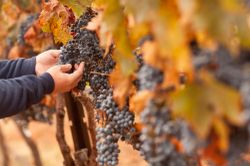 Napa generally harvested earlier this year with night-time picking the norm to protect both the pickers and the grape condition from extreme day-time temperatures. Many vineyards also increased the numbers working the vines to compress the harvest period.
Napa generally harvested earlier this year with night-time picking the norm to protect both the pickers and the grape condition from extreme day-time temperatures. Many vineyards also increased the numbers working the vines to compress the harvest period.
Yield was generally slightly up on Cabernet, but lower with Pinot Noir and Chardonnay. Growers of the key Cabernet Sauvignon grape in Napa state that extractions were easy, and the quality of the juice is exceptional. The concentration, colour, and intensity with lots of texture has the potential to create strong, bold, full wines and is creating a lot of excitement.
Our view
The embryonic 2024 wines are in vats and at the start of their journey. Evidently, our changing climate is posing significant challenges for the industry around the world, and it is impressive to see how the sector is responding and continuing to produce phenomenal quality wines.
 Despite this we may see much more significant changes in the coming decades in terms of where vines are grown, and the varietals used. The vintages of the early 2020s may be a signpost of things to come and the wines may also become highly collectible as benchmarks of this era.
Despite this we may see much more significant changes in the coming decades in terms of where vines are grown, and the varietals used. The vintages of the early 2020s may be a signpost of things to come and the wines may also become highly collectible as benchmarks of this era.
We will get more insight to the quality and supply of 2024 wines, two key factors for investors, next year with the Bordeaux en primeur tastings a key event. A significant influence on demand will be the all-important price and status of the secondary market and we will comment further on the 2024 wines next year.
In the meantime, investment wines are currently available below their release prices and some at their lowest market price for many years. There is a very significant opportunity for new investors in wine and those looking to add to, and diversify their portfolios to buy at the market low and be well-positioned for future growth.
For more information speak to an expert member of our team on 0203 384 2262 and see our latest Market Report.
